Orange Bundt Cake
If you love light and fruity cake recipes, you are sure to love this soft and flavorful Orange Bundt Cake.
We love the convenience of bundt cakes, but even more, the moist crumb and delicious orange flavor is sure to make this recipe an instant favorite.
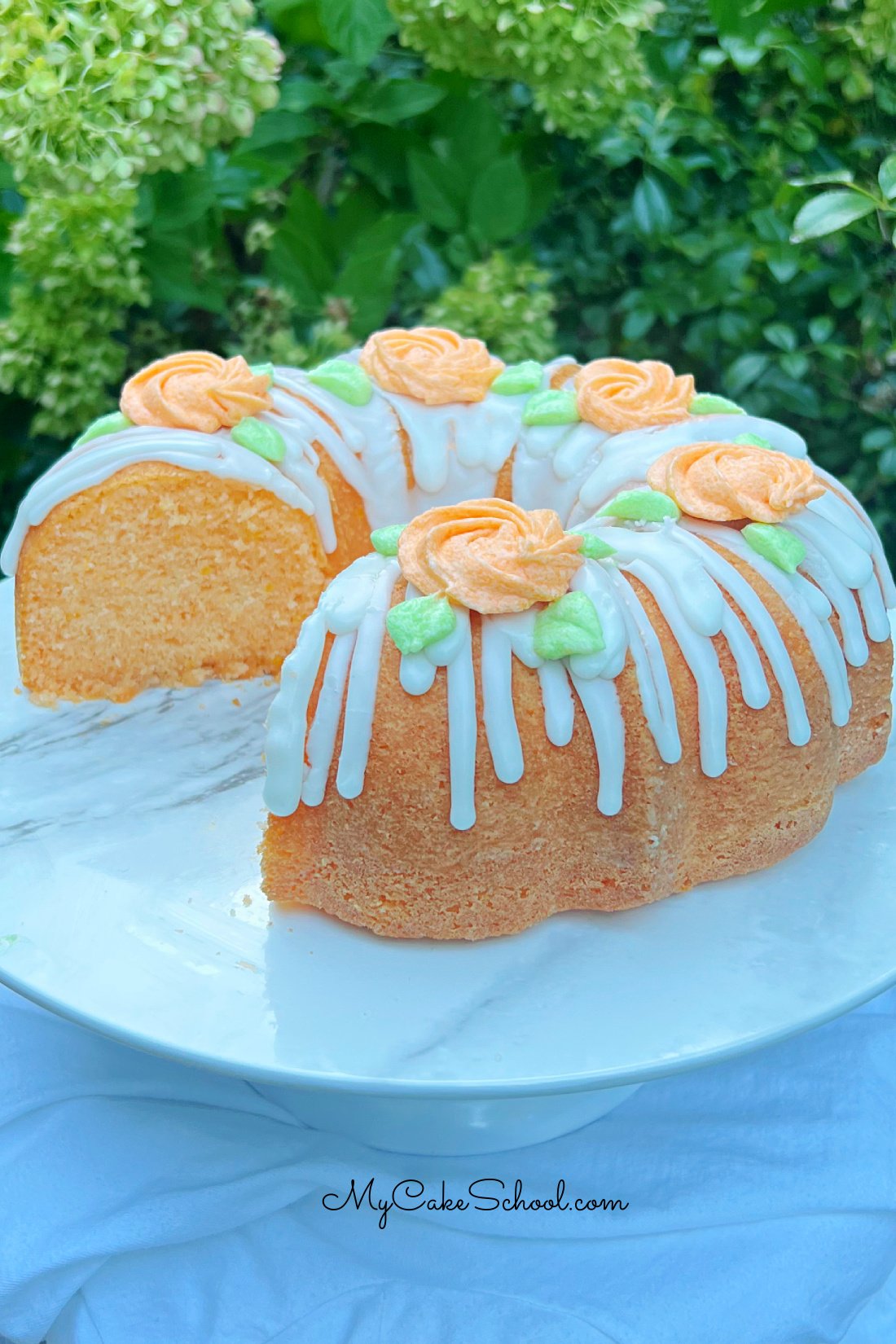
Table of Contents
Why we love it:
- Moist, soft crumb (thanks to the buttermilk and cake flour in the recipe.)
- Easy to make and decorate
- Great orange flavor from orange zest and a bit of orange jello powder. (See notes if you'd like to substitute with orange extract!) .
- Makes a great birthday cake recipe, potluck dessert, or for the next time the cake cravings strike!
A Look at our Ingredients
Here's a quick look at the key ingredients for our bundt cake. (This doesn't include the ingredients for the glaze and buttercream which are optional).
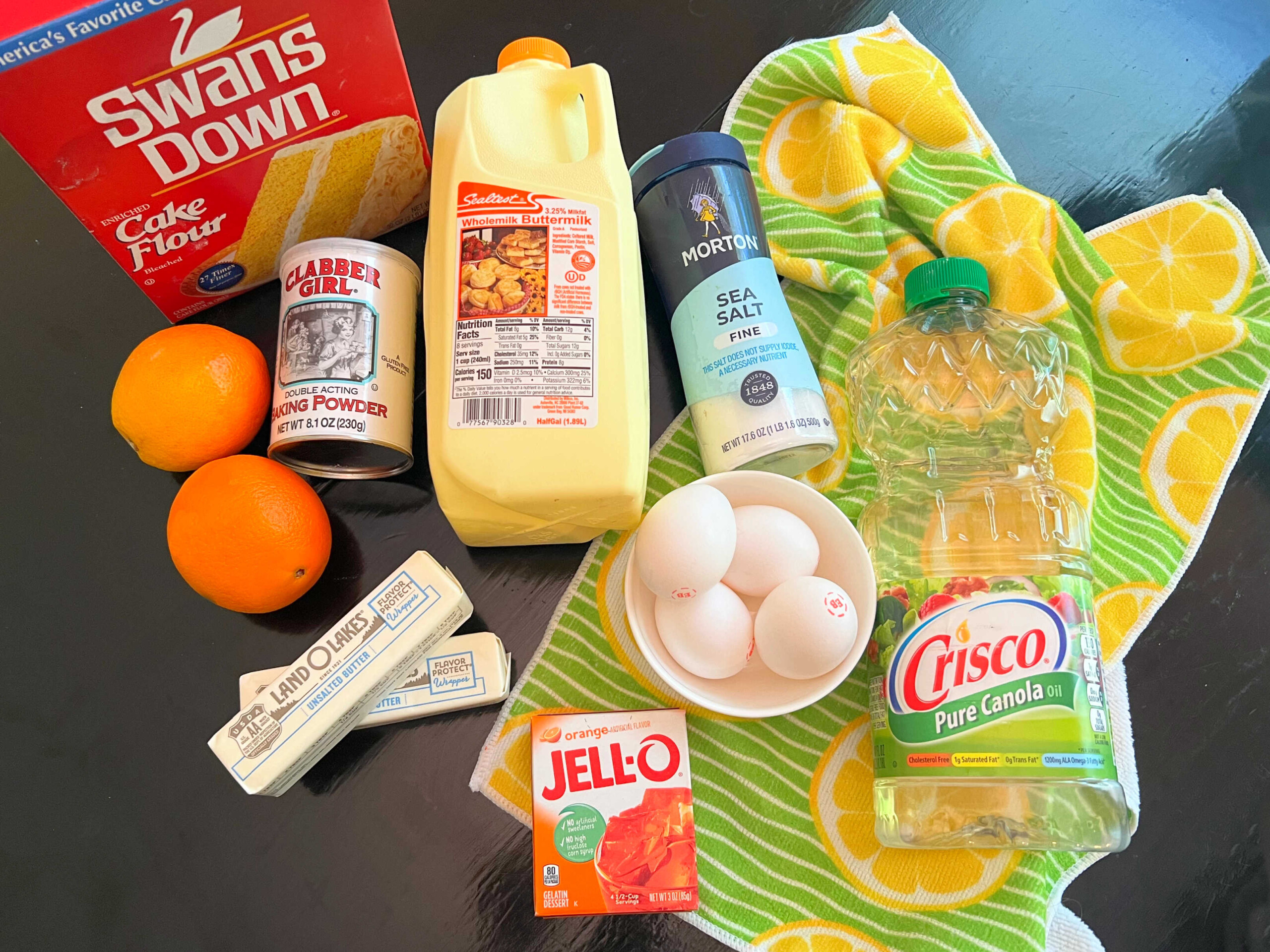
- Buttermilk makes this cake extra moist and tender. This is true with all of our buttermilk cakes, such as our popular recipes for Lemon Buttermilk Cake, Vanilla Cupcakes, and many others! (We use whole buttermilk rather than reduced fat. You can find a substitute in the notes of our recipe card.)
- Zest of Oranges- The orange zest holds wonderful citrus flavor! We like to use a microplane, however if you don't have this, a fine grater is a good option as well.
- Cake flour results is a softer, more tender cake as it contains less protein.
- Orange Jello- We used jello powder for an added boost of orange flavor. If you would prefer to use orange extract, that is a great option too. We tried this in one of several versions that we made when creating this recipe. See notes for details!
How to Make Orange Bundt Cake
You can find the full, printable recipe card at the bottom of this post for our Orange Bundt Cake. Here is a quick look at our steps!
- Preheat the oven to 325℉. Grease and flour a bundt or tube pan.
- In a medium bowl, whisk the cake flour, orange jello powder, baking powder and salt for 30 seconds. Set aside.
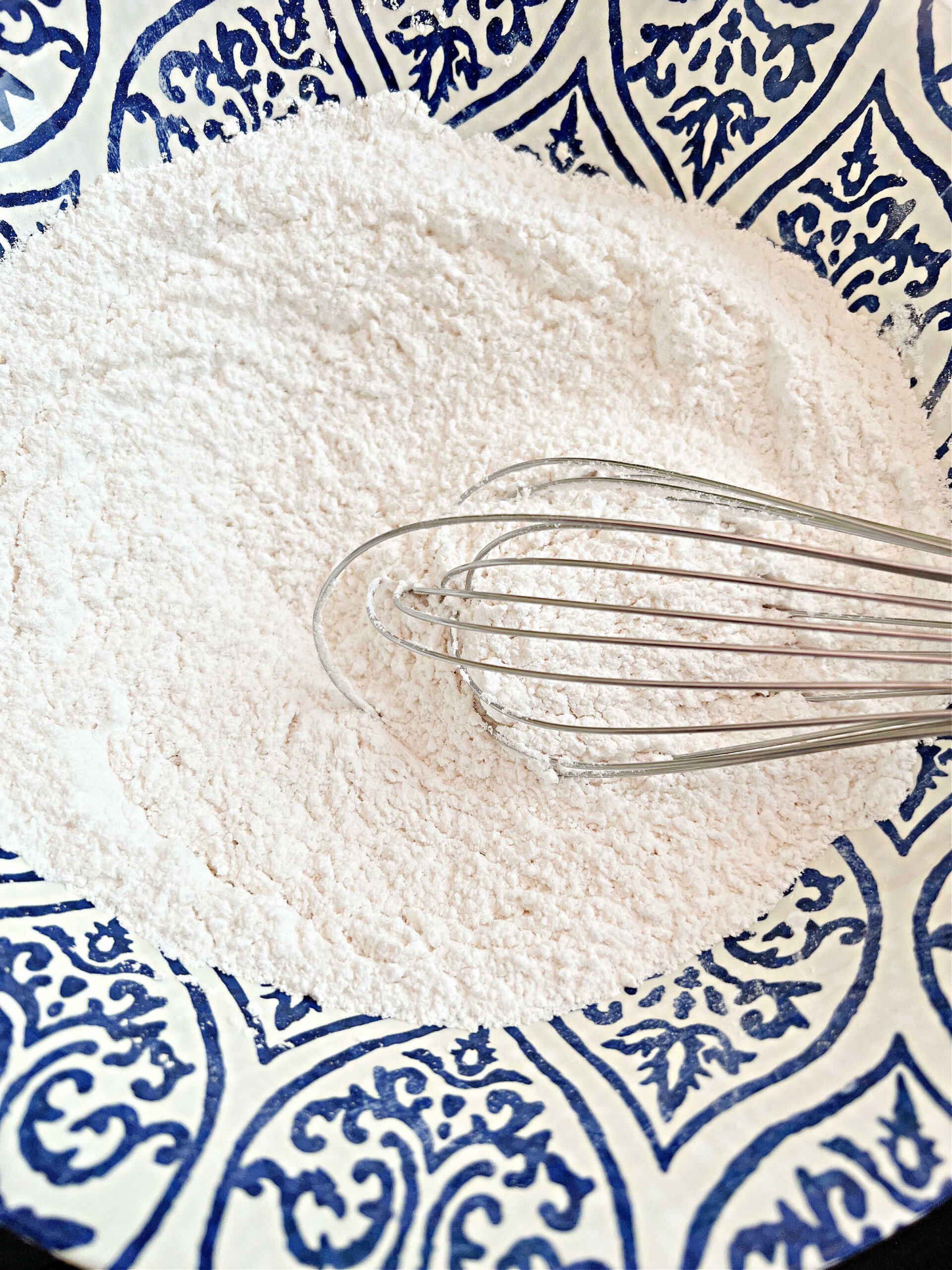
- In another bowl, add the vegetable oil, buttermilk, and orange zest.
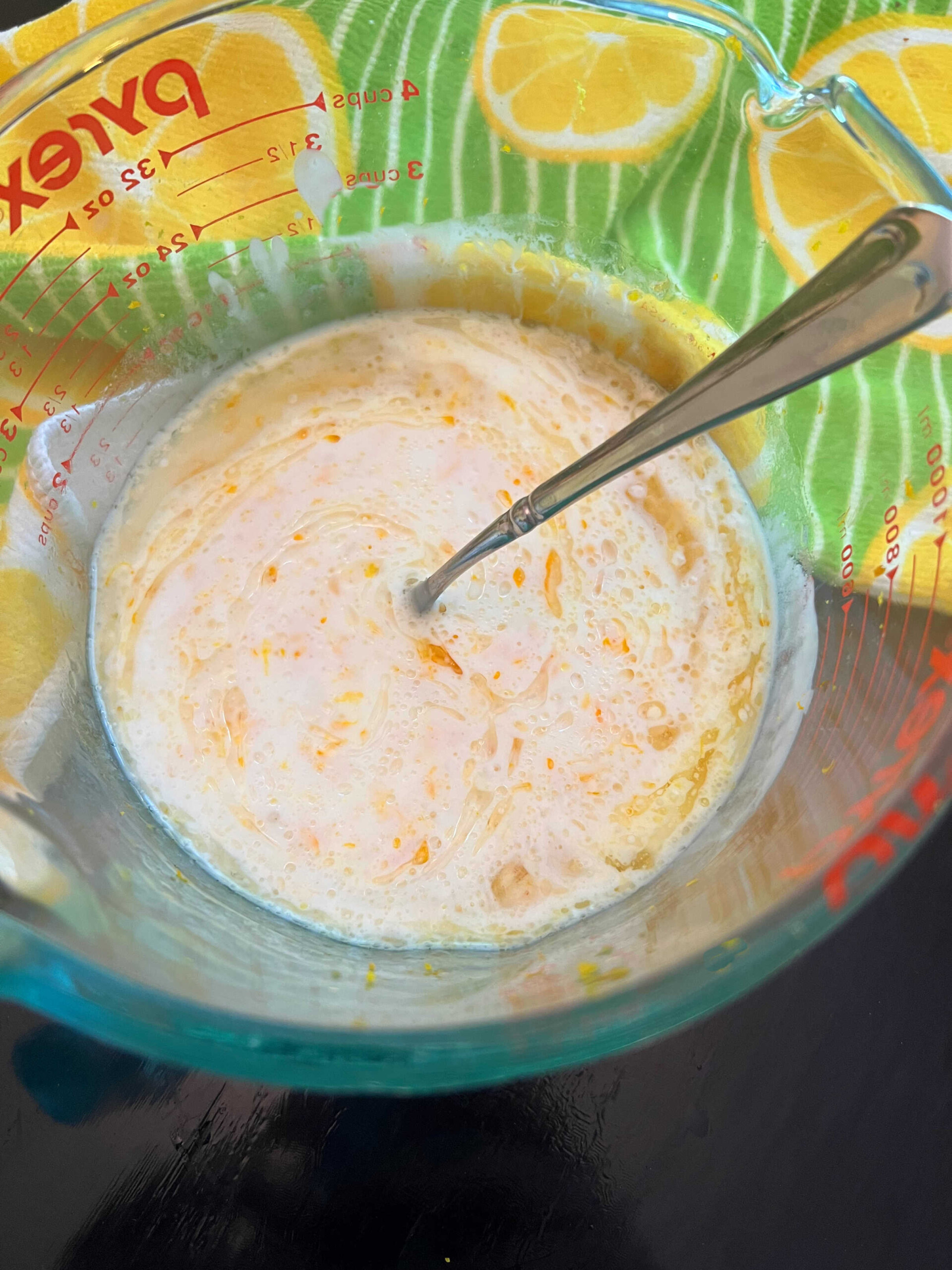
- In the bowl of your mixer, (use paddle attachment if using a stand mixer), add the softened butter and mix at medium speed until smooth. Gradually add the sugar and mix for 3 to 5 minutes until lightened in color and fluffy.
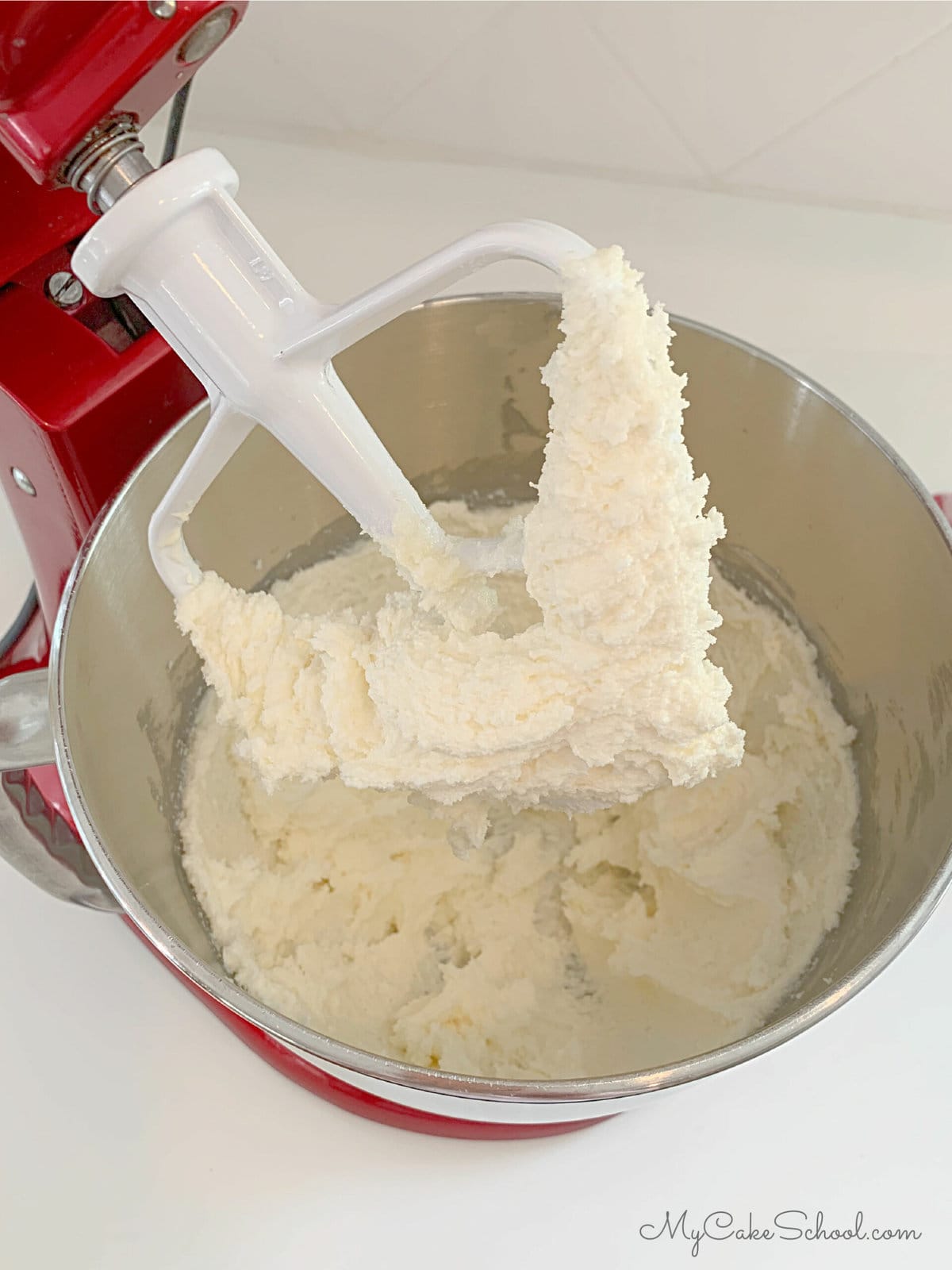
- Add the eggs one at a time, mixing after each until the yellow of the yolk has blended.
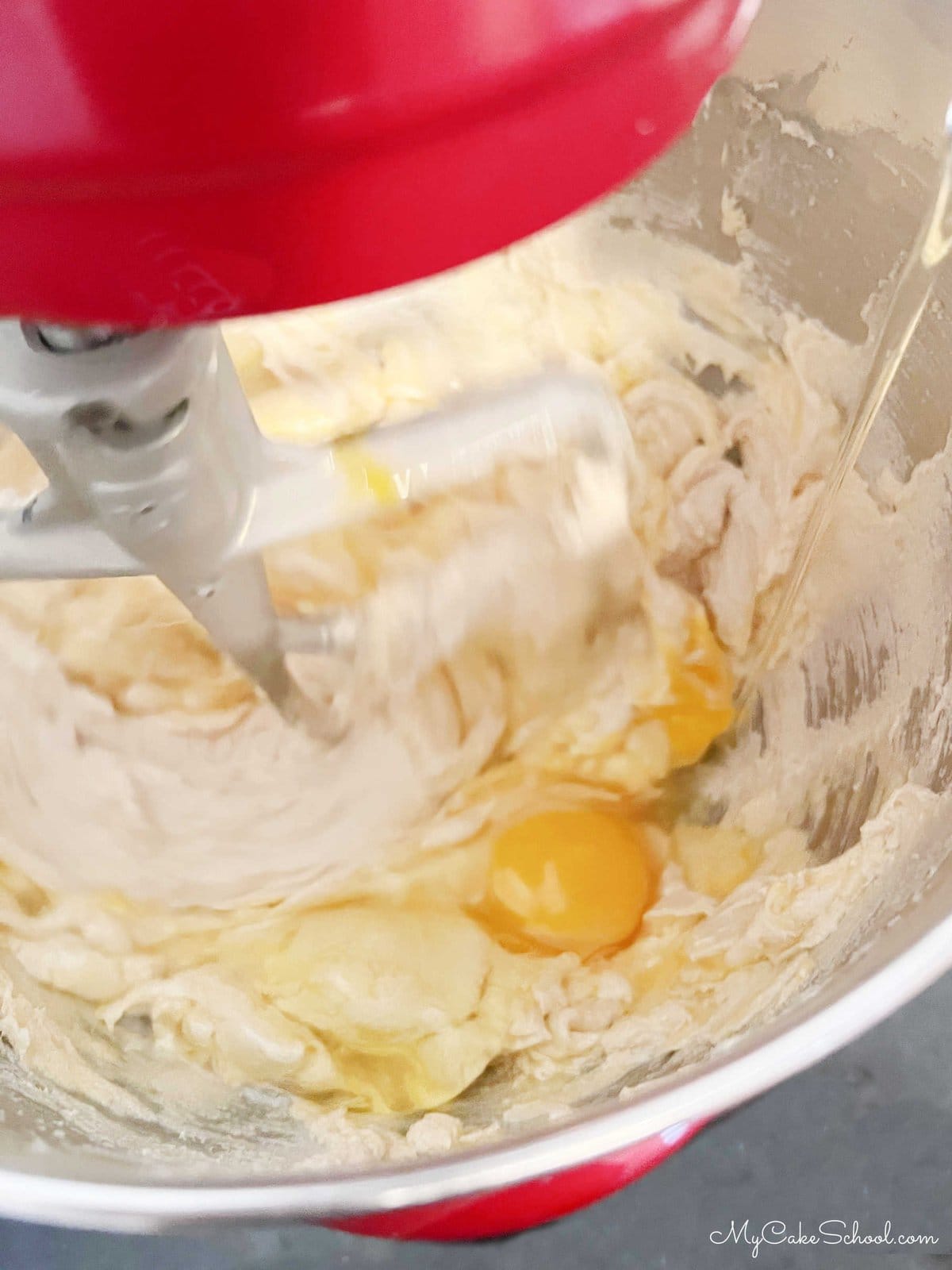
- With the mixer on low speed, alternately add the flour mixture and the buttermilk mixture, beginning and ending with the dry ingredients. (That will be three additions of dry and two of liquid). We added a bit of orange coloring just after our last addition.
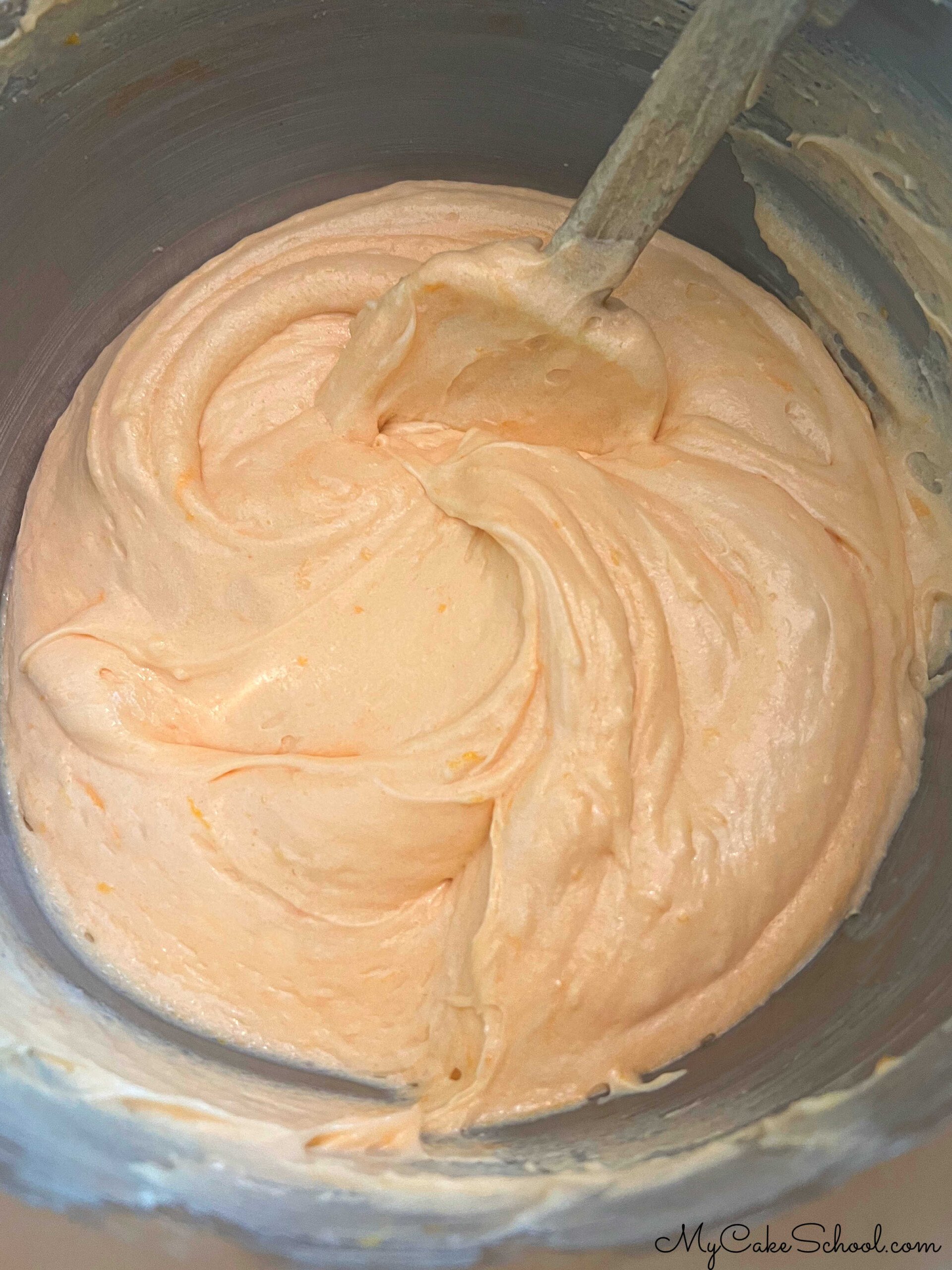
- Pour or scoop the orange cake batter into the prepared bundt pan.
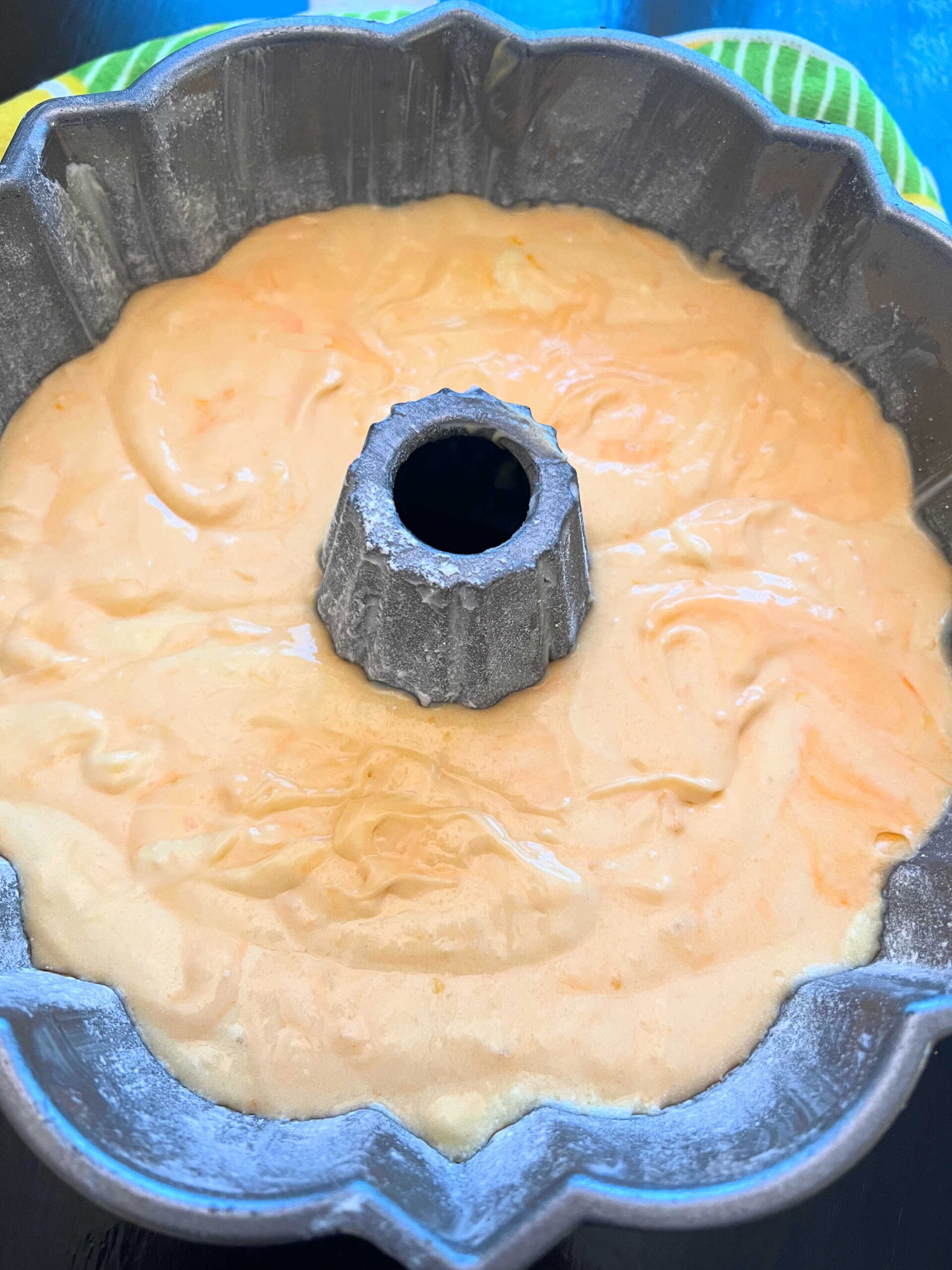
- Bake at 325 degrees for 50-55 minutes or until a toothpick inserted into the center comes out clean or with just a few crumbs attached. Baking times may vary. Check at the 45 minute mark to be on the safe side!
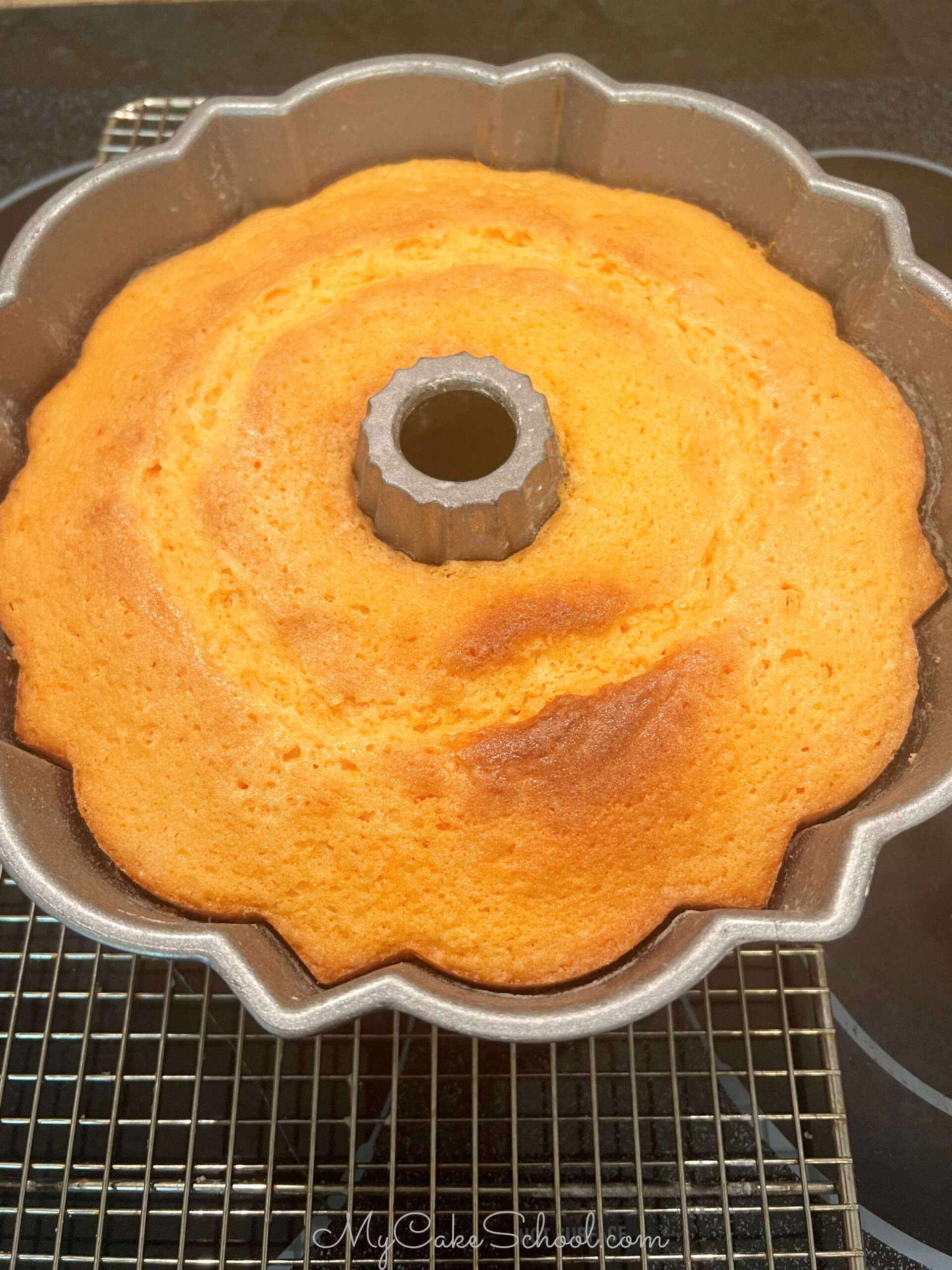
Allow the orange bundt cake to cool for 10 minutes and turn out. (We set a timer for this.)
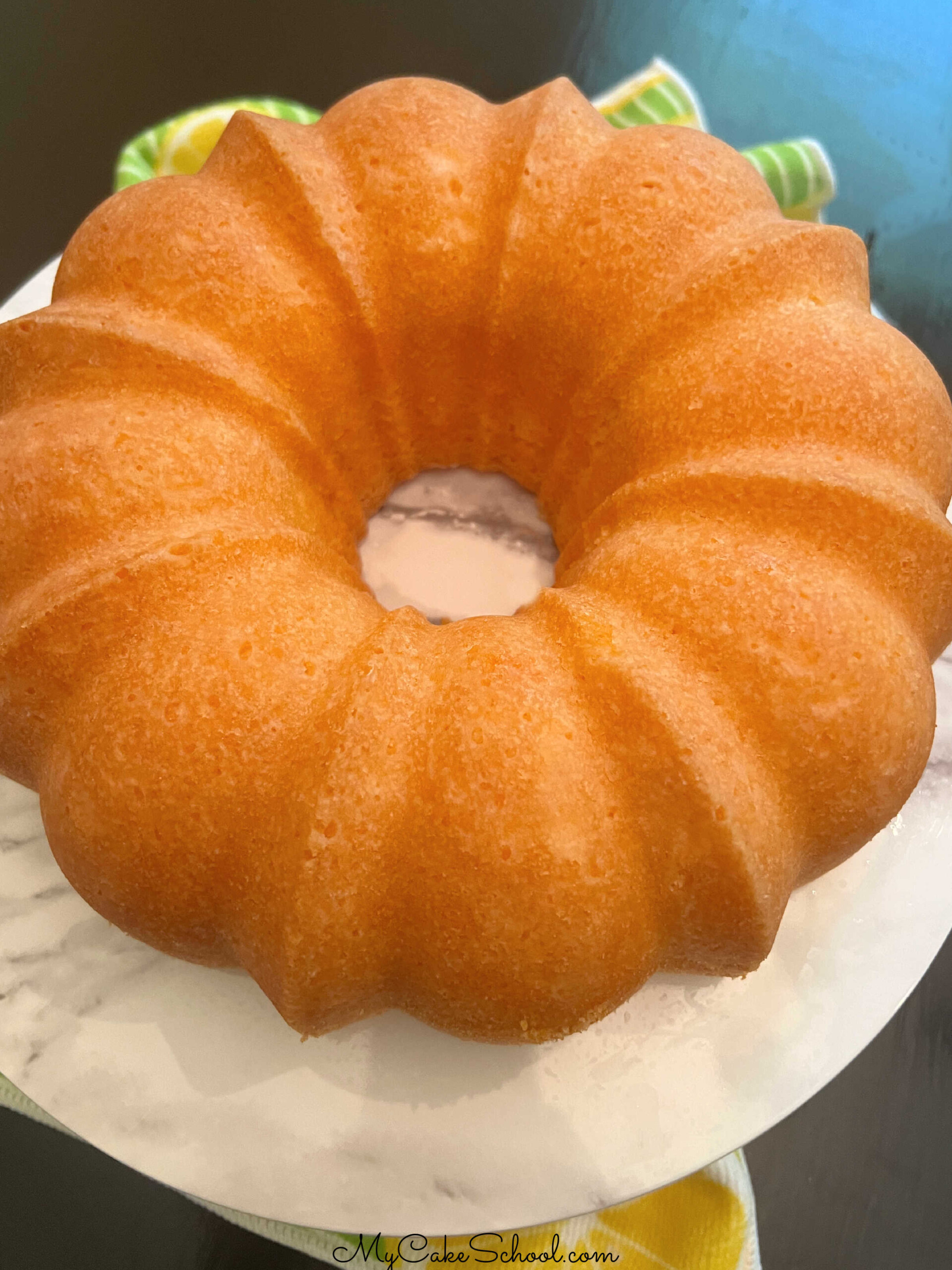
Simple Glaze
We often decorate our bundt cakes with a simple glaze made from confectioners sugar, a bit of milk, and flavoring (as with our Buttermilk Pound Cake, Lemon Pound Cake, and more.)
For our orange bundt cake glaze, we combined confectioners sugar with a bit of milk and orange extract (you could also use juice from your zested oranges.).
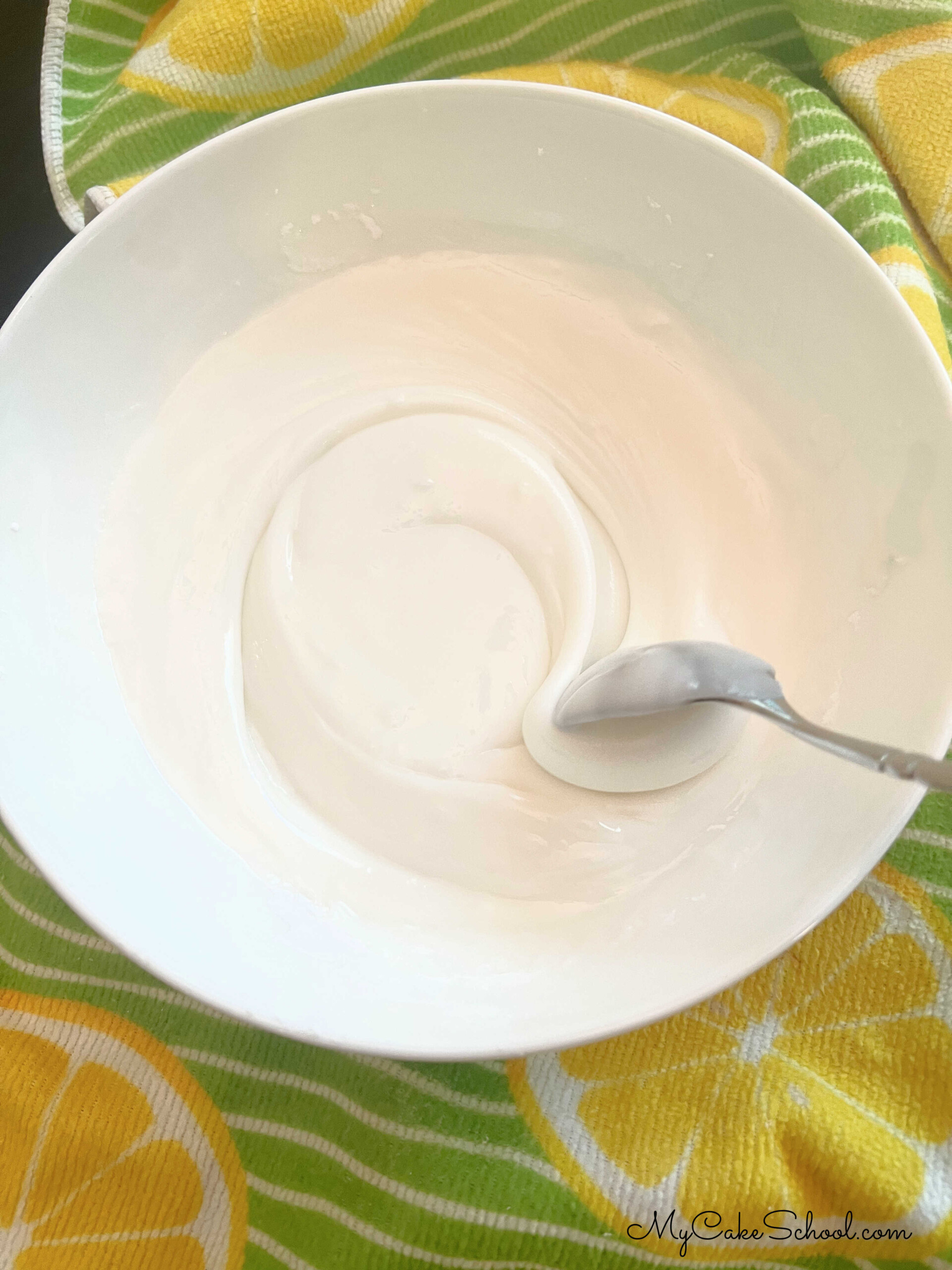
This is a very sweet glaze- not something that you would eat by the spoonful! But when drizzled over the cake, it is perfect.
In addition to the glaze, we also decorated the orange bundt cake with buttercream flowers as an optional step! The glaze just takes about 10 minutes to set.
Decorating the Orange Bundt Cake
Once the cake has cooled, you can drizzle the glaze over the cake. You can spoon it over if you'd like, or for more controlled drips, we used a disposable piping bag with the tip snipped away.
This makes for such a pretty presentation. However, we decided to decorate our cake even more today with buttercream flowers. This is a simple half-batch of buttercream which we used to pipe rosette flowers and leaves.
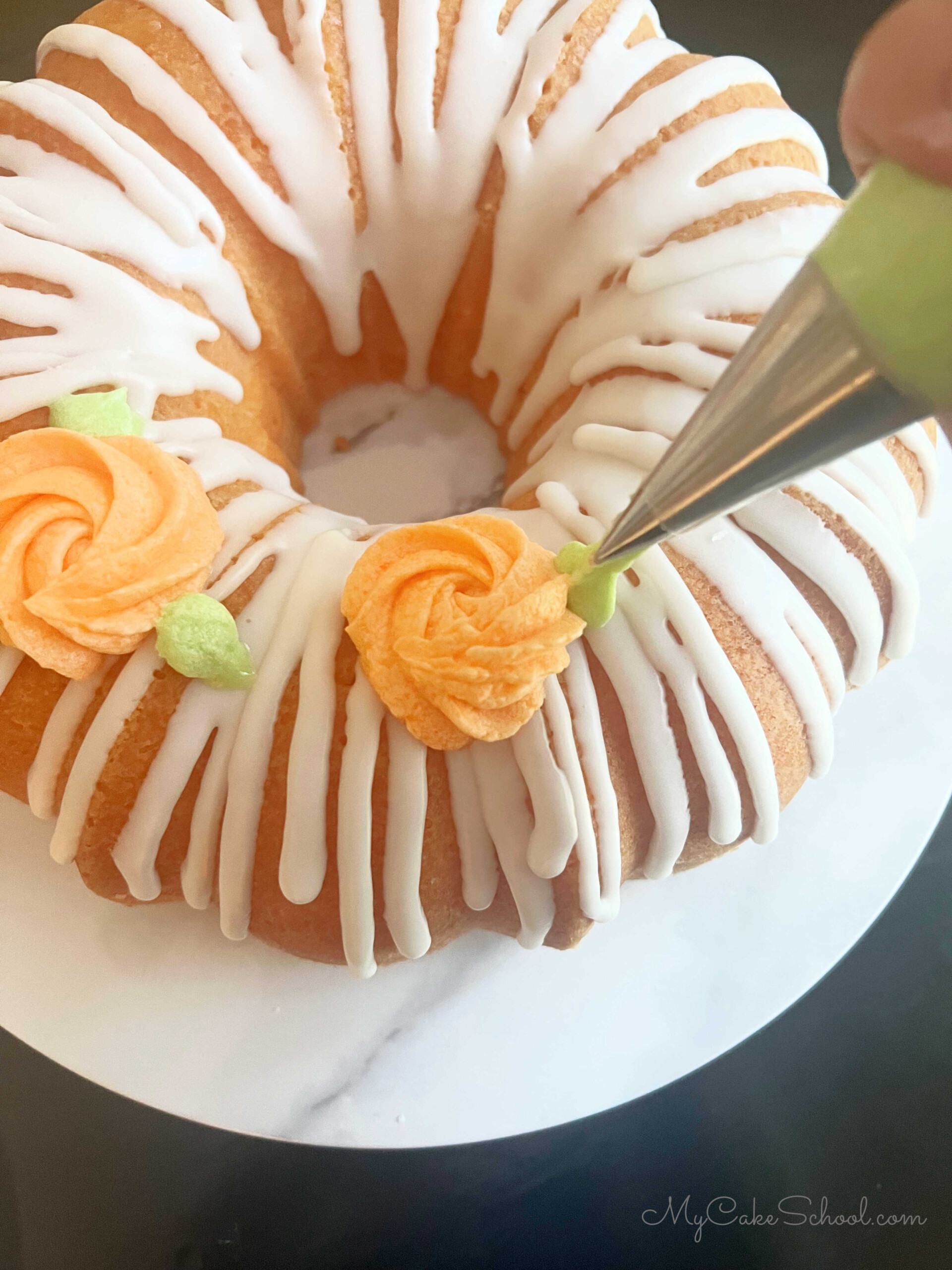
*As mentioned above, make sure that the cake is completely cool before decorating. The buttercream flowers will melt if the cake is even slightly warm. I was reminded of this today when I piped my rosettes too soon! ;0)
Here is a look at our finished cake!
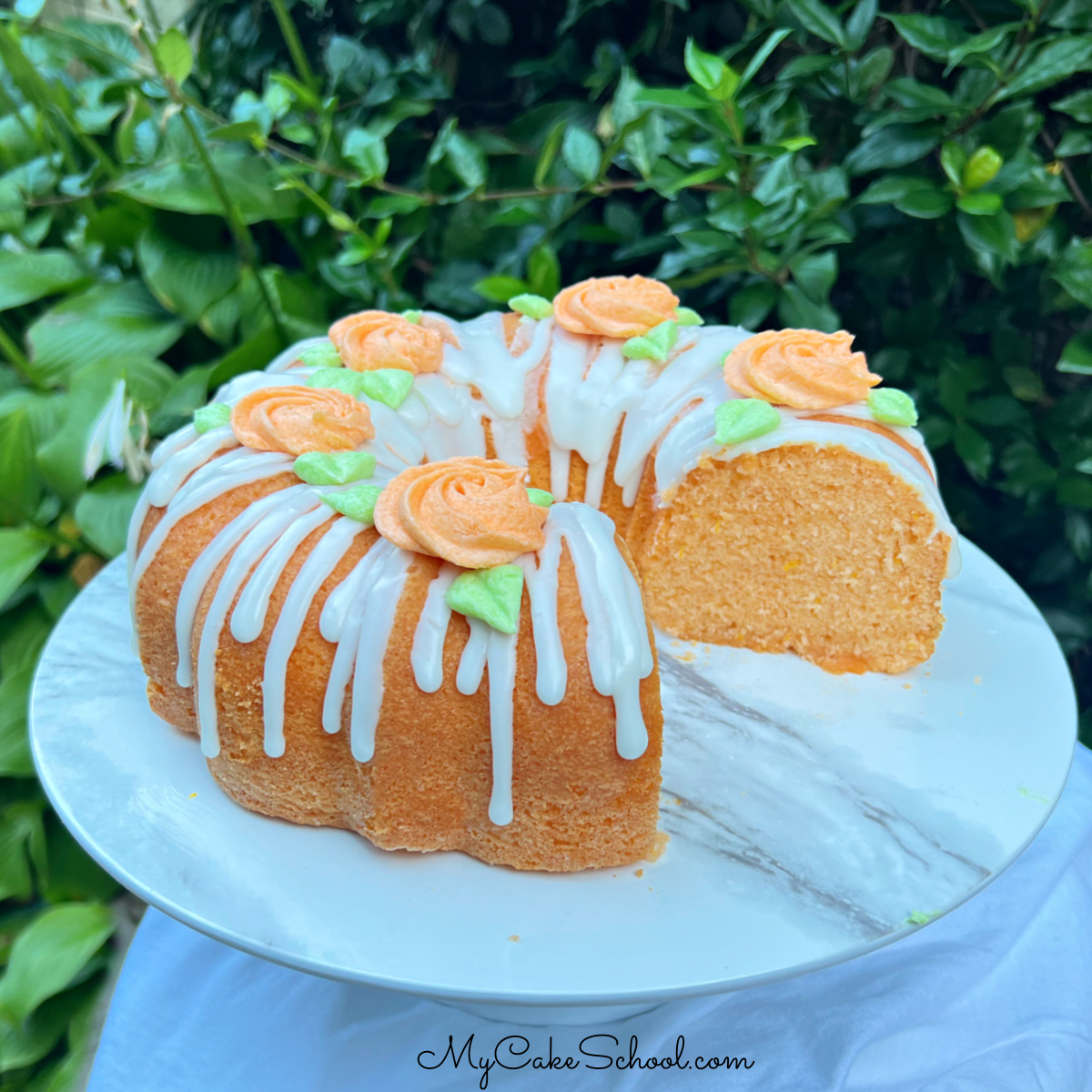
Recipe FAQs
More Bundt Cakes
In addition to our orange layer cakes like Orange Velvet Cake, Orange Dreamsicle Cake, Orange Pineapple Cake, Orange Cupcakes, and scratch Orange Cake, we have many bundt cakes that we would love to share with you!
A few of our favorites are our Hummingbird Bundt Cake, Chocolate Bundt Cake, and Blueberry Bundt Cake. Here are a few more:
Thanks so much for stopping by! Don't miss our full collection of favorite Cake Recipes, including cake recipes from scratch as well as cake mix recipes!
We also have tons of cake decorating tutorials that we have made over the years. Here are just a few of our favorite simple cake designs for birthdays!
Have you made this? We would LOVE for you to leave a ⭐️ rating as well as a comment and photo below! We really appreciate your feedback!
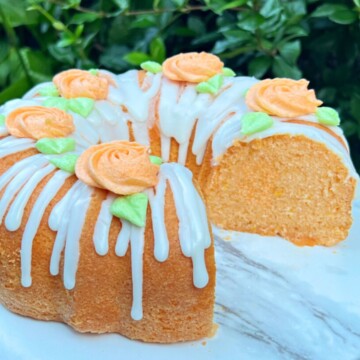
Orange Bundt Cake
Ingredients
- 2 sticks (226g) unsalted butter, softened
- 2 cups (400g) sugar
- 4 large eggs, room temperature
- 3 cups (342g) cake flour (see notes for substitution)
- 3 teaspoons (12g) baking powder
- ½ teaspoon (3g) salt
- zest of two oranges (for us, this was about ¼ cup.)
- ¼ cup (54g) vegetable oil (we use canola oil)
- 1 cup (235g) Buttermilk
- 4 Tablespoons (45g) Orange Jello Powder (Don't make the Jello. See notes if you prefer orange extract.)
- A small amount of orange coloring gel (optional)
Simple Orange Glaze
- 2 cups Confectioners Sugar, sifted (measure then sift)
- 3 to 4 Tablespoons 45 to 60g milk, (You can substitute part of all of this with fresh juice from an orange.)
- Pinch of salt Approximately ¼ teaspoon
- Orange Extract- Optional. Start with ½ teaspoon and add additional until you reach desired amount of flavor.
Buttercream Decorations
- 1 stick unsalted butter, softened
- 2 cups confectioners sugar
- ½ teaspoon salt
- 2-3 tablespoons milk or orange juice (or combination of the two (start with less, then add a bit more as needed.)
- ½ teaspoon orange extract (optional)
Instructions
For the Cake
- Preheat the oven to 325℉. Grease and flour a bundt or tube pan. Our pan has a baking capacity of 12 cups. This recipe makes about 7.5 cups of batter.
- In a medium bowl, whisk the cake flour, baking powder, orange jello powder, and salt for 30 seconds. Set aside.
- In another bowl, add the vegetable oil, zest of two oranges, and buttermilk. Set aside.
- In the bowl of your mixer, add the butter and mix at medium speed until smooth. Gradually add the sugar and mix for 3 to 5 minutes until lightened in color and fluffy.
- With the mixer on medium speed, add the eggs one at a time, mixing after each until the yellow of the yolk has blended.
- With the mixer on low speed, alternately add the flour mixture and the buttermilk mixture, beginning and ending with the dry ingredients. (That will be three additions of dry and two of liquid). After the last addition, add orange coloring gel if you are using any, and mix just until incorporated.
- Pour or scoop the orange cake batter into the prepared bundt pan. There should be at least 1 ¼ inches from the top of the batter to the top edge of the bundt pan. (A popular rule of thumb is not to fill the pan more than ¾ full.)
- Bake at 325 degrees for 50-55 minutes or until a toothpick inserted into the center comes out clean or with just a few crumbs attached. Let cool 10 minutes and turn out. Baking times may vary. (Check after 45 minutes to be safe.)
Simple Orange Glaze
- Combine confectioners sugar, 3T milk, orange extract (or fresh orange juice), and a pinch of salt in a small bowl and stir until smooth. Start with 3 tablespoons milk (or juice) and increase little by little as needed to reach desired consistency. If not using right away, place plastic wrap or damp paper towel over bowl.
- Drizzle over the cooled pound cake. (I spooned mine into a piping bag with the tip snipped away for more control.) If the glaze is too thin, add a bit more powdered sugar. If it is too thick, add a bit more juice or a touch of milk.
Decorating the Cake
- We tinted about ¼ cup or so of our frosting green for leaves, and the rest we tinted orange (approx. ¾ cup.) Adjust amounts based on your design. We piped orange rosettes with a 1M piping tip, and leaves with a large leaf tip 366 (a smaller 352 tip is a good option also.)
- Store the cake in an airtight container or cake dome at room temperature for 2-3 days (or longer in the refrigerator). If refrigerating the cake, it should be taken out at least 2 hours before serving for the softest texture.

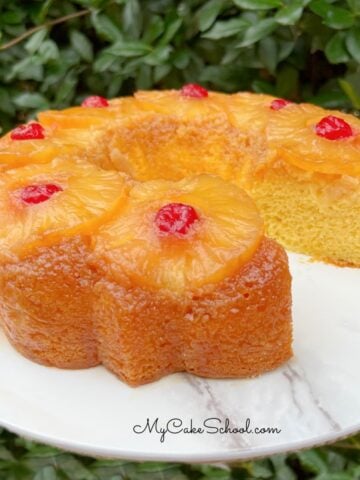
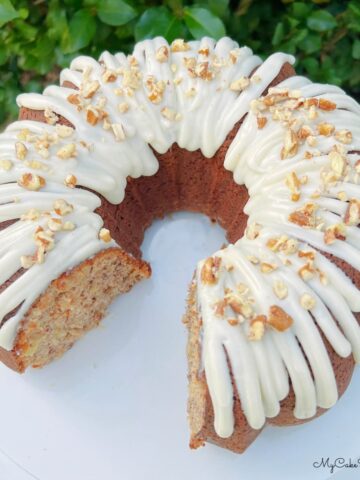
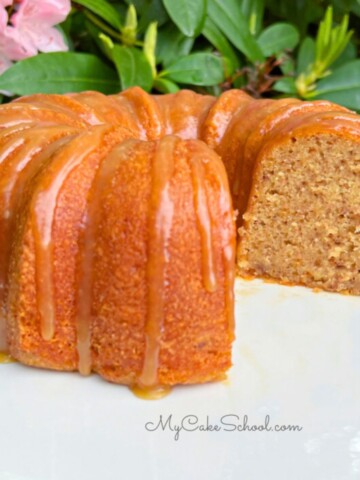
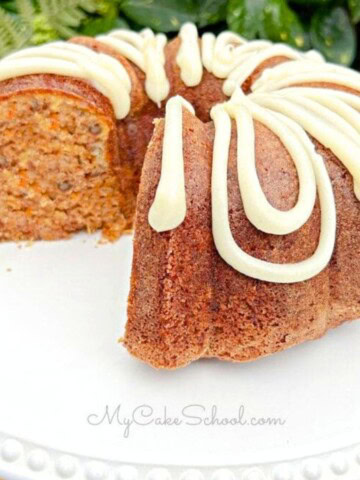
Wow that looks terrific. I love orange cake :-) So pretty! Love it! :-)
the buttercream for the decorations ended up icing the whole cake.Thickly. Plus there was about a tablespoon to spare.